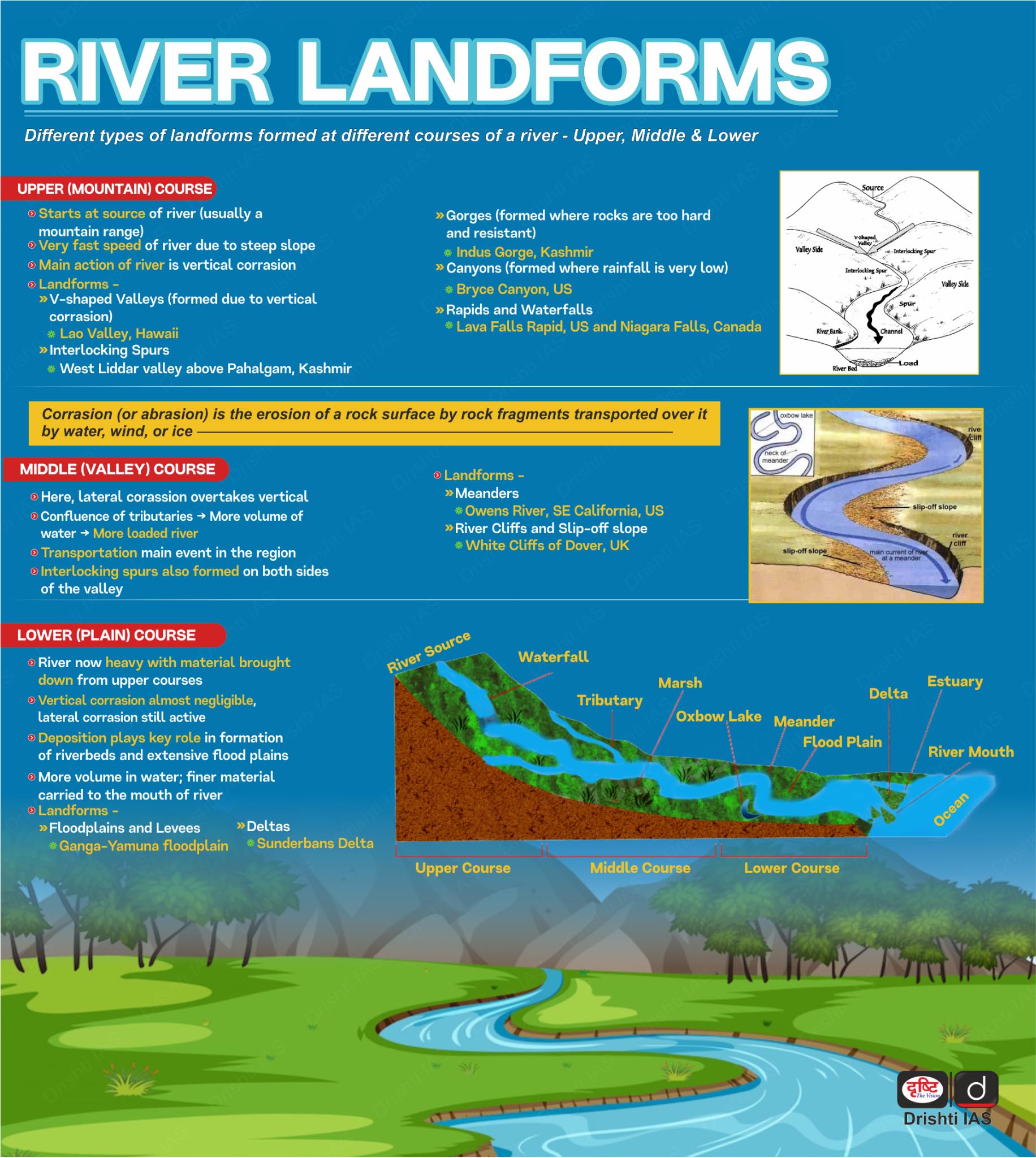Bihar
Kanwar Lake
- 17 May 2024
- 2 min read
Why in News?
Once a haven for migratory birds, Asia’s largest freshwater oxbow lake and Bihar’s only Ramsar site, Kanwar is gradually disappearing.
Key Points
- An oxbow lake is a curved lake formed alongside a winding river as a result of erosion and sediment deposition over time.
- Oxbow lakes are typically crescent-shaped and are common features in floodplains and low-lying areas near rivers.
- Kanwar lake, which used to be a popular tourist spot, has fallen victim to encroachments and is now battling for its existence.
- The uncontrolled expansion of land and building of embankments along the nearby Burhi Gandak river has blocked the main water entry point to the wetland.
- There is a shared belief that with governmental initiatives to restore the lake, it has the potential to reclaim its past grandeur and transform into a significant tourist destination, offering new job prospects for residents.
Kanwar Lake
- It is also known as Kabartal jheel.
- It is a residual oxbow lake, formed due to the meandering of Gandak river, a tributary of Ganga.
- It is covering the majority of the Indo-Gangetic plains in northern Bihar.
- The Wetland is an important stopover along the Central Asian Flyway, with 58 migratory waterbirds using it to rest and refuel.
- It is also a valuable site for fish biodiversity with over 50 species documented.
- Five critically endangered species inhabit the site, including three vultures – the red-headed vulture (Sarcogyps calvus), white-rumped vulture (Gyps bengalensis) and Indian vulture (Gyps indicus) – and two waterbirds, the sociable lapwing (Vanellus gregarius) and Baer’s pochard (Aythya baeri).
- Threats: Major threats to the site include water management activities such as drainage, water abstraction, damming and canalization.






-min.jpg)